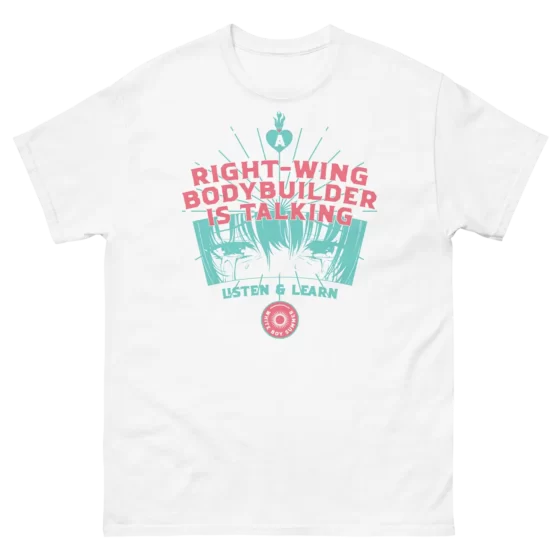How Paleo Is the Paleo Diet?
“Bro, just stop eating bread: our ancestors never did” is one of the most common lines thrown around when anyone talks about diets, health and nutrition online. Variations include, “no wheat”, “only sourdough”, “no sugar”, “no fruit sugar”, “only raw honey”, “only eat meat” and so on.
The idea that there is an optimal or perfect human diet, stretching back to the dawn of our species, is widely accepted, but no-one can agree what it really means. Do we stop drinking milk, or just those without the genetics to do so? What about the Inuit? They only seem to eat meat and fat, so is that a diet we should follow?
Even when I’ve presented evidence that Paleolithic hunters and Mesolithic foragers ate wild grains, nuts and roots, the response is often anger, mainly accusations that I don’t understand my subject or that hunters just made use of them as a back-up in case hunting failed. The other extreme is that I must be defending eating processed oil and pea protein sludge – a fine example of the nuance most online discussion displays.
The reality is that several issues have become confused. The first is that the last few decades have seen ancestral eating diets explode in popularity, including variations of the ‘Paleo’ diet and forms of ketogenic and now carnivorous diets as well.
Many of these are well thought-out approaches to increasing our health and refusing the toxic gruel that most Western populations consume.
However, these should not be confused with the archaeological and anthropological understandings of hunter-gatherer diets.
As any prehistorian will tell you, there is no one standard hunter-gatherer diet, but many different ways of making use of nearby resources. This is the second issue: the evidence for ancestral diets.
The third issue is the loose systems of understanding around what should and should not be consumed – ancestral, traditional, Lindy. Clearly coffee, wine, milk, chocolate, glycine and whey are not foods found in the deep Ice Age past, so we need heuristics to easily bypass the confusion of nutrition “science” and ‘peer-reviewed’ papers.
Together, these three elements are not readily combined. There is no evidence for ancient hunters eating a carnivore diet; but it seems to really help today in the short term. Eating domesticated animals is hardly paleo in the true sense; but are some animals good approximations for aurochs perhaps? Studies show that our microbiomes respond positively to a diet rich in different plants, but some hunter-gatherers don’t eat many plants at all. So which is correct: the science or the anthropology?
One of the basic pieces of knowledge about prehistory is the idea that we evolved as hunter-gatherers until the Neolithic Revolution, when we started to farm, domesticate animals and plants and consume grain as the primary source of calories.
Yes, this is true, but it’s not the entire story. Grain domestication took place roughly 12,000 years ago in the Fertile Crescent, but logically in order to domesticate wild grasses, we must already have been eating grass seeds.
This is exactly what we see in the record: the site of Ohalo II in Israel dates back to 19,500 BP, to the Upper Palaeolithic, and contains the remains of grinding stones, hearths, charred seeds and evidence for dough preparation and baking of two crucial species, wild barley and wild wheat.
Nor is Ohalo II an isolated example; the Italian site of Bilancino revealed grindstones with wild grass seeds dated to 25,000 BP, the Chinese region of Shizitan has produced many flint blades which show microscopic evidence of grain threshing as far back as 28,000 BP and even Neanderthal sites such as Amud Cave show phytolith evidence of wild grain collection between 75 and 55,000 years ago. Clearly our species’ love of bread has very deep roots!
In a way this makes sense, since hunting is a risky activity and often results in frustration and no food. Even today with rifles this is often the case, so when using knapped stone tools it may have been common to return empty handed. Plants on the other hand, don’t move and provide easy cheap calories once they have been processed. Studies looking at Native American foraging have shown that acorns were preferentially gathered over salmon, simply because the risk-reward equation favours plant gathering.
However, this is not an argument for eating doughnuts every day. Wild grains and the methods of preparing them, along with roots and tubers, provide far more fibre and complex phytochemicals than today’s genetically altered wheat.
The grains would have been seasonal and also only located in certain parts of the world. This is where the idea of a single hunter’s diet breaks down. Once modern humans colonised the world, they settled into radically different eating habits and cultures, rich in various taboos, myths, stories and relationships with plants and animals.
Some modern foragers eat as little as 6% plant food in the diet, others as much as 55%, and the category ‘plant’ also includes leaves, shoots, bark, roots, fruit, nuts, seeds, fungi and seaweed.
So where does that leave us trying to understand how best to eat today?
One problem with modernity’s philosophical core is that we understand ourselves as individuals first, not bound fully with kin, ancestors and those yet to be born. Dieting today is mostly for one’s self, sometimes with a thought to being healthy for your loved ones. But the time spans of our deep past are beyond comprehension. The difference between 19,000 and 28,000 BP is fairly little to an archaeologist, but 9,000 years is all of recorded history.
So to truly grasp how our diets have evolved over several million years means ignoring the individual and focusing on populations. It’s one thing to go on a keto or carnivore diet today, but would you want your pregnant or breastfeeding wife to join you? Your toddlers? Your aging parents? Those who are sick, immobile or infirm?
To understand the role of carbohydrates in the human diet we should be thinking about all stages of life, and not just how they affect healthy young males. Again, to be clear, I’m not saying you need to eat bread to be healthy, but I’m saying that breads and grains should not be excluded from everyone’s diet in the name of purity or aping our ancestors.
The argument I’ve outlined for grains also applies to pretty much every source of carbohydrates, including honey and tubers.
Honey in particular is highly prized by modern foraging societies and young men go to extreme lengths to scale trees and withstand thousands of stings to retrieve honey for their people.
During the rainy season the Mbuti people of the Congo eat up to 80% of their daily calories in honey, and it’s not unusual for groups such as the Hadza to eat around 15% of their daily calories in honey all year round. Given the caloric density of honey it is inconceivable that our Palaeolithic ancestors didn’t make use of it.
Of course, honey is limited to warm and temperate climates for the most part, and the Arctic populations are the archetypal case for people arguing for carb-restricted diets. But again, we are learning a lot about both the diets and the genetics of Arctic hunter-gatherers.
The huge amount of circulating poly-unsaturated fatty acids in their blood, mostly from omega-3s, has produced distinct genetic adaptive protections, along with increased liver size, increased urea production and a host of enhanced genes for shuttling fatty acids between cells.
Alongside this is the tendency for Arctic peoples to eat their meat raw. They do this because there isn’t enough fuel for cooking, but also because fresh muscle meat contains large amounts of glycogen, which in effect means they are not eating keto at all. Up to 20% of the Inuit diet is composed of carbohydrates from raw meat. Theirs is a diet evolved in the most niche of circumstances, with a niche phenotype to match. Clearly it can’t be the diet of everyone else in the world as well.
What this all comes down to is a plea against a certain kind of purity spiral that seems increasingly popular today. That appeal to purity goes something like this. If meat is good, then eating just meat must be better, cleaner, more like our ancestors.
It’s appealing, but it’s wrong. We must think beyond just short-term dieting, like some women’s weight loss magazine, and start thinking about local, sustainable, generational eating. Simple meat, eggs, dairy, fruit, veg and some nuts can be grown and harvested almost anywhere in the world.
Making use of local knowledge and plants, delicacies and inherited recipes, food preparation traditions and nutrient-dense foods suitable for all ages is a true ancestral diet, one that strong families – and even dynasties – can be raised on.
Stone Age Herbalist tweets @paracelsus1092. Visit stoneageherbalist.substack.com. His first book, Berserkers, Cannibals and Shamans, a collection of essays, is available now in paperback and Kindle formats from Amazon.
































